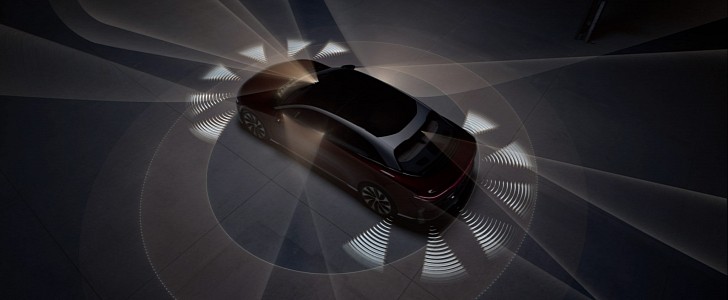It’s no secret now that Nvidia is keen on entering the new car market. The technology it has developed can very well become one of the main competitors in the autonomous vehicle (AV) space. Lucid’s confirmation is just another step in the right direction. Here’s what that means and why it suits an aspiring luxury EV manufacturer.
Nvidia’s GPU Technology Conference (GTC) is similar to an Apple Event. The company gathers its partners around, invites a lot of other people, and it showcases what progress has been made or introduces a new product or service.
Unlike the iPhone maker, Nvidia likes to keep people connected for longer periods of time. This year Nvidia took it a step further and, over the span of four days, organized a lot of panels that facilitate access to better understanding and developing artificial intelligence. The event will end on Thursday, the 24th of March.
While we’re confident Nvidia is doing important work for both gamers and other stakeholders of the next era of technology, this year, one thing got our attention: Lucid’s confirmation that it implemented the Drive Hyperion solution. This is a computing platform that can be easily upgraded because its core philosophy is based on modularity. In layman’s terms, you can change a lot of stuff in a certain sector without needing to update the whole system. This is great for carmakers since over-the-air updates are slowly yet surely becoming the norm.
DreamDrive Pro comprises 14 cameras, a LiDAR scanner, five radars, and 12 ultrasonic sensors. These parts work together in a seamless manner to provide the driver with enough information for daily driving but are also capable of engaging in autonomous operations. Even though Lucid Air doesn’t have this ability now (and there are a lot of legal challenges to face), its systems can be simply upgraded in the future. The car is able to provide a number of safety assistance systems that can be of use in multiple cases. Essentially, the Air is a smart vehicle and will be able to learn more tricks as time passes and the American carmaker advances its research – all thanks to Hyperion’s modularity and Lucid’s programming.
The same Nvidia technology will also offer the possibility for artificial intelligence (AI) integration, a thing Lucid wants to do because it’s looking to offer its clients the best when it comes to electric mobility.
DreamDrive Pro is standard only on the Dream Edition and the Grand Touring trims.
The partnership with Nvidia might also secure much-needed chips for the carmaker, but this hasn't been officially disclosed during the GTC. More details can be found in the press release attached down below.
Unlike the iPhone maker, Nvidia likes to keep people connected for longer periods of time. This year Nvidia took it a step further and, over the span of four days, organized a lot of panels that facilitate access to better understanding and developing artificial intelligence. The event will end on Thursday, the 24th of March.
While we’re confident Nvidia is doing important work for both gamers and other stakeholders of the next era of technology, this year, one thing got our attention: Lucid’s confirmation that it implemented the Drive Hyperion solution. This is a computing platform that can be easily upgraded because its core philosophy is based on modularity. In layman’s terms, you can change a lot of stuff in a certain sector without needing to update the whole system. This is great for carmakers since over-the-air updates are slowly yet surely becoming the norm.
DreamDrive Pro comprises 14 cameras, a LiDAR scanner, five radars, and 12 ultrasonic sensors. These parts work together in a seamless manner to provide the driver with enough information for daily driving but are also capable of engaging in autonomous operations. Even though Lucid Air doesn’t have this ability now (and there are a lot of legal challenges to face), its systems can be simply upgraded in the future. The car is able to provide a number of safety assistance systems that can be of use in multiple cases. Essentially, the Air is a smart vehicle and will be able to learn more tricks as time passes and the American carmaker advances its research – all thanks to Hyperion’s modularity and Lucid’s programming.
The same Nvidia technology will also offer the possibility for artificial intelligence (AI) integration, a thing Lucid wants to do because it’s looking to offer its clients the best when it comes to electric mobility.
DreamDrive Pro is standard only on the Dream Edition and the Grand Touring trims.
The partnership with Nvidia might also secure much-needed chips for the carmaker, but this hasn't been officially disclosed during the GTC. More details can be found in the press release attached down below.







